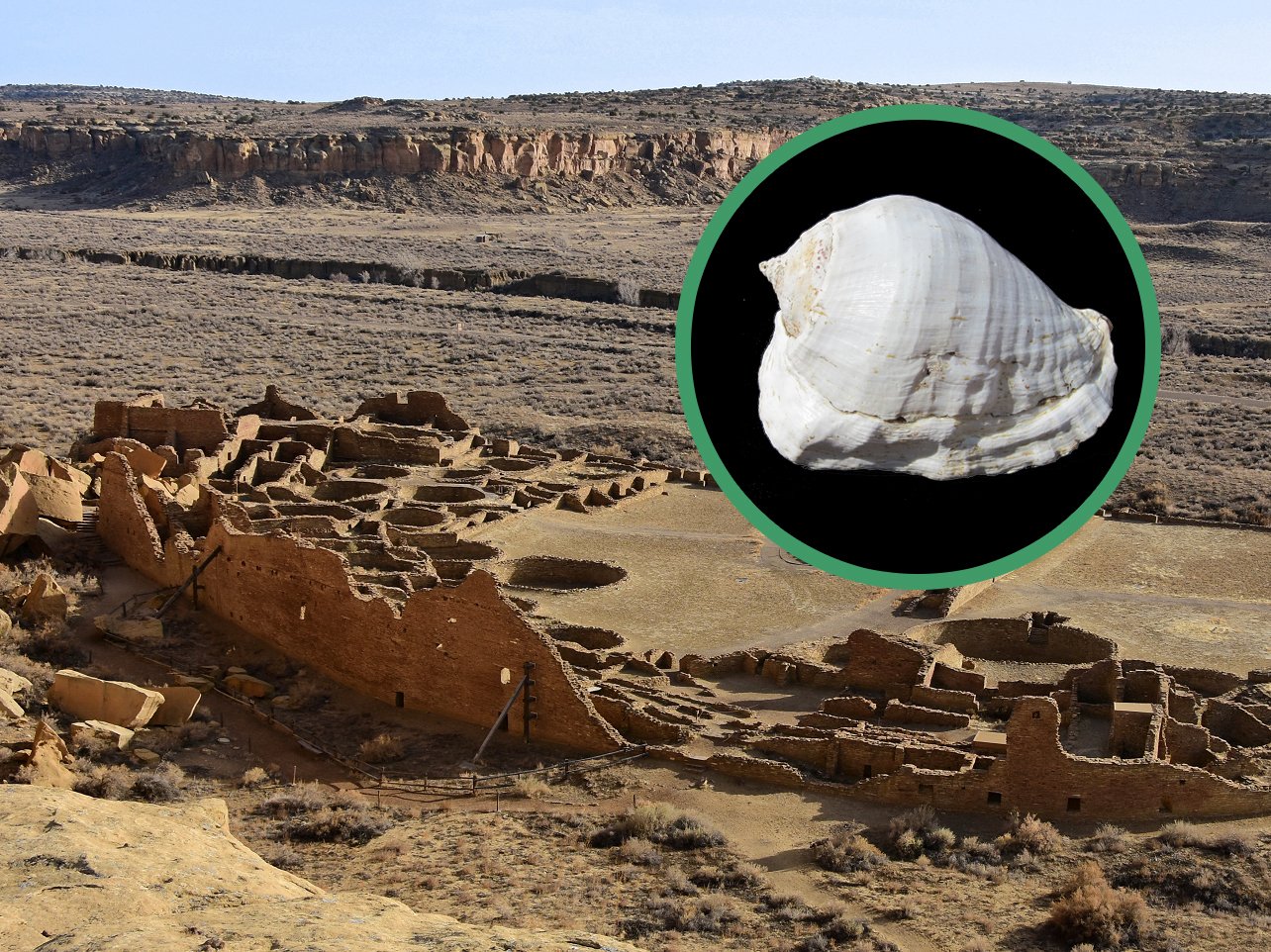A new study, published in the journal Antiquity, suggests that the ancient Pueblo culture used conch-shell trumpets for communication.
The focus of the study is the site of the Chaco Canyon in north-west New Mexico. Located in Chaco Culture National Historic Park, Chaco Canyon contains numerous small dwellings and multi-story buildings known as great houses.
Based on the density of structures, archaeologists speculate that the site was once a bustling metropolis, inhabited by as many as 2,300 people during its height from AD 1050 to 1130.
Conch-shell trumpets have been found in burial contexts at Chaco Canyon, which today are used in contemporary Pueblo ritual practices.
Using a Soundshed Analysis model, archaeologists have digitally modelled the sound of a conch-shell trumpet being sounded at a great house in relation to other features in the landscape. Soundshed Analysis calculates the distance a sound can travel from a point, taking into account both the type of sound and environmental conditions such as elevation and ambient noise.
“Chaco Canyon is surrounded by over one hundred understudied great house communities”, says lead author Professor Ruth Van Dyke from Binghamton University. “We sought to determine if extra-canyon great house communities demonstrated relationships similar to Chaco Canyon between landscape, community layout, and sound.”
In this case, the team modelled the sound of a conch from great houses at five Chacoan communities to determine whether it would reach all habitation sites within the community.
They found that if somebody blew a conch-shell trumpet from the great house at the centre of all five Chacoan communities, the sound would have reached almost all of the surrounding settlements.
This suggests that ancient Puebloans may have managed their land-use and community structures around the sound of trumpets. The sound was potentially used to signal communal activities, such as religious ceremonies.
“This is not unlike the idea of a medieval church bell calling a community to mass”, states Professor Van Dyke.
It also indicates how Chacoan heritage sites should be managed going forward.
“Soundscapes were meaningful dimensions of past experiences, landscapes, and environments and are important facets of social interaction in the ancient world,” observes Professor Van Dyke. “Management of archaeological and heritage sites should incorporate consideration of the auditory environment.”
Header Image Credit : Shutterstock
Sources : Antiquity | Seashells and sound waves: modelling soundscapes in Chacoan great-house communities – Ruth M. Van Dyke, Kristy E. Primeau, Kellam Throgmorton & David E. Witt. https://doi.org/10.15184/aqy.2024.54





